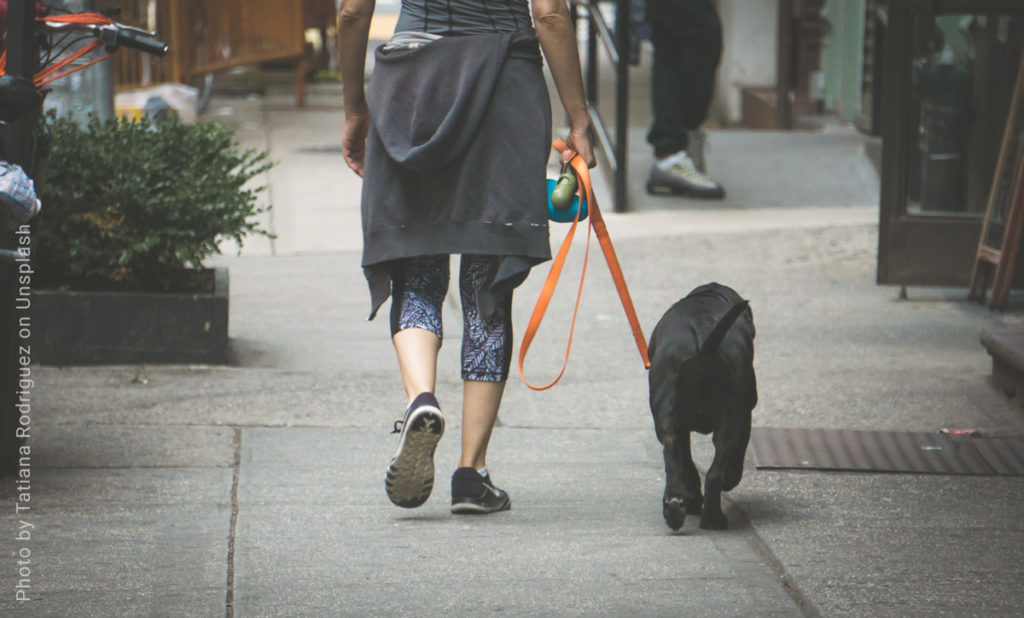One of the greatest things about being a professional dog walker is being outdoors and getting exercise. We also enjoy seeing others out and about too! Warmer weather and being home more during this pandemic have given us plenty of opportunities to be outdoors; joggers, families walking their dogs, babies in strollers, bike rides, etc. Practicing street safety is important so that you, your children, and your dogs stay safe.
For instance, when walking down the street, we tend to walk on the right side because that’s the side we drive on. Yes, bikes, motorcycles and cars should all use the right side of the street. However, foot traffic should be on the left and, of course, on a sidewalk whenever possible.
Many people suggest that it doesn’t feel safe to face oncoming traffic, which makes sense, but in reality, it’s much safer to walk this way. Cars will go around us no matter what side of the street we are on, but what if a driver is distracted by a text or phone call and doesn’t see us? If you’re facing them, you are able to notice their mistake with plenty of time to move out of the way. If they’re behind you, however, you wouldn’t know until it is too late. Foot traffic in the early morning and late afternoon is at an even higher risk because drivers have the low-lying sun in their eyes as they approach you.
According to findings from a CDC study, simply walking against traffic instead of with it cuts the risk of getting hit by a car by about 77 percent. Pedestrians facing traffic have a significantly lower risk of being struck by a car than those walking with their back toward traffic. In the last decade, the GHSA has calculated that there has been a 60 percent increase in pedestrian deaths. The association cites a number of possible reasons for the continuing increase in deaths, which include the growing popularity of light trucks and SUVs, warmer weather, and an increase in cellphone use while driving.
10 Walking Safety Tips
- Be predictable. Follow the rules of the road and obey signs and signals.
- Walk on sidewalks whenever they are available.
- If there is no sidewalk, walk facing traffic and as far from traffic as possible.
- Keep alert at all times; don’t be distracted by electronic devices that take your eyes (and ears) off the road.
- Whenever possible, cross streets at crosswalks or intersections, where drivers expect pedestrians. Look for cars in all directions, including those turning left or right.
- If a crosswalk or intersection is not available, locate a well-lit area where you have the best view of traffic. Wait for a gap in traffic that allows enough time to cross safely; continue watching for traffic as you cross.
- Never assume a driver sees you. Make eye contact with drivers as they approach to make sure you are seen.
- Be visible at all times. Wear bright clothing during the day, and wear reflective materials or use a flashlight at night.
- Watch for cars entering or exiting driveways, or backing up in parking lots.
- Avoid alcohol and drugs when walking; they impair your abilities and your judgment.
For more information visit the PBIC and NHTSA websites

